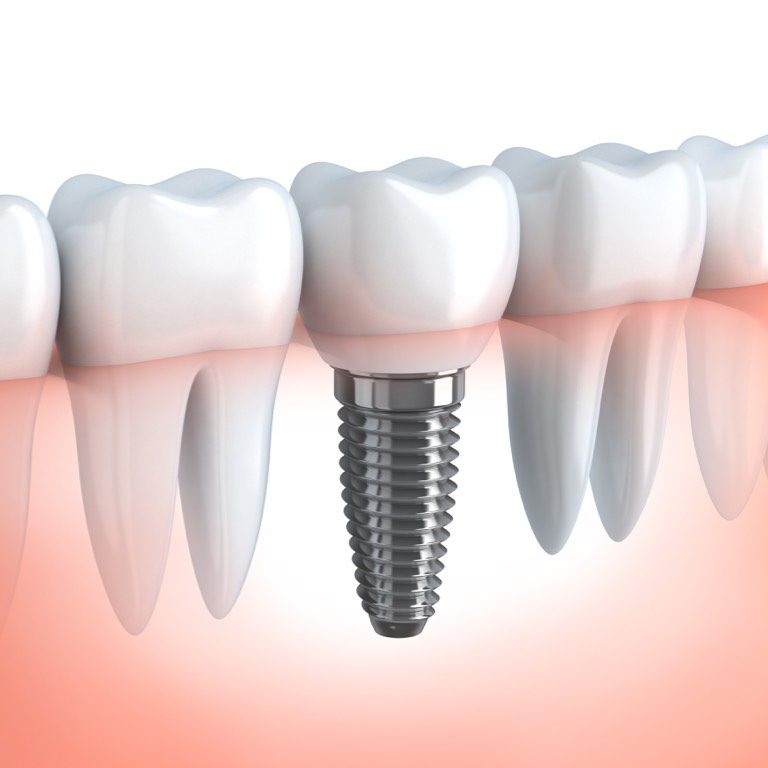Implants
Dental implants are a very popular and successful option for replacing a tooth.
They involve a titanium screw replacing the root of the tooth, with a ceramic crown on top, closely mimicking the look and feel of a real tooth.
People will rarely be able to identify which are your real teeth, and which is the implant. Not only that, with proper care, they can last longer than you!


Benefits of Implants
Dental implants provide many benefits over traditional forms of tooth replacement:
- They last much longer than bridges or dentures.
- An implant will prevent bone loss associated with missing teeth.
- They are a great replacement option to removable dentures and bridges.
- No wear and tear on surrounding teeth is caused.
- They are aesthetically pleasing and very natural looking.
- Dental implants allow patients to eat hard foods with confidence.
- Patients experience an increase in self-confidence.
- There are no upper age restrictions for a dental implant.
- With poor-fitting dentures, the teeth can slip around causing you to mumble or slur your words. Dental implants allow you to speak without this worry.
- Individual implants also allow easier access between teeth, improving oral hygiene.
- Dental implants don’t require reducing other teeth, as a tooth-supported bridge does. Because nearby teeth are not altered to support the implant, more of your own teeth are left intact, improving long-term oral health.
Getting Implants
Step 1
You may be referred by either your dentist or family and friends. Initially, you will have a detailed examination and consultation appointment to help decide if a dental implant is appropriate for you. If it is, you will be given specific information about the process and costs, and any further questions answered.
Step 2
You will have a minor surgical procedure in the dental chair, where the screw is placed in the gap in the gum. Bone will grow around the screw, locking it in place over the next few months. The ninety-minute procedure may result in some localised pain and discomfort which can be managed by pain medication.
Step 3
Usually, by the day after placement, you should be able to carry on with your everyday life and return to work. Appointments with either your dentist or another specialist will be booked for you in the weeks and months ahead to create the crown, which is the final step in your journey towards an amazing new tooth.
FAQs
How do I know if a dental implant will suit my situation?
Will it hurt?
During the procedure, the normal dental anaesthetic is used (just as though you were getting a filling). After the surgery, mild over-the-counter painkillers are usually all that is required; however, you can be given a script for stronger painkillers as a precaution. If you prefer not to know about what is happening, a general anaesthetic can be arranged.
What will it look like after the implant is in, but before the crown is placed?
There will usually be about three months of healing time before the crown is placed. During this time, a temporary bridge or denture will be fitted to fill in the gap. It should be noted that in some cases, the crown can be fitted to the implant immediately. Your periodontist will discuss the criteria for this with you at your initial appointment.
Are there any common complications?
The risk and types of complications are similar to any other minor oral surgery procedure. Your initial examination and x-rays can help to identify any specific risk relevant to your particular case. All risks will be discussed with you well before the day of your procedure.
Specialist periodontists
Striving to provide outstanding patient care.

Dr Fisher

Dr Thalagala

